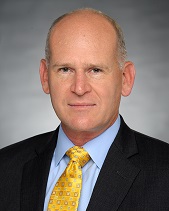Thank you all for joining our Las Vegas Population Health 360 Conference. More than 100 health care leaders gathered for this invite-only event to discuss current trends, challenges and the future vision of the value-based payment landscape. Attendees engaged in a series of panels and round table discussions throughout the two days to learn best practices and share experiences in the journey through all levels of risk arrangements.
Here are a few of the key conference takeaways we identified:
- Managing through policy uncertainty requires sustained focus on the “North Star” –outstanding individual member and patient care.
Many speakers and attendees urged health plans to really get on board and to recognize new models of care that better serve their members. Nationally, many health plans appear to continue to see greater rewards from continuing in fee-for-service arrangements then risk arrangements. While providers must have a strategic group partnership with the health plan, many health plans are having challenges building their own and supporting providers in building MSO / PHSO risk “chasses.” There are not enough dollars on the table through shared premium risk and appropriate delegation to incentivize significant change in institutions. Despite this, there are health plans that are the exception and all leaders in attendance retain their “North Star” commitment to move to risk-based arrangements because it is in the best care for the patient. It is not about risk versus fee-for-service; it is about improving quality and making the best decisions for our patients. - Health systems need to be innovative leaders and engage community partners to help improve communities and resolve the social determinants of health.
Speakers were aligned that social determinants of health (SDOHs) continue to negatively impact the health of the communities they serve. While nationally, less than 50 percent of health system executives believe that addressing SDOHs is their responsibility, in a value-based payment world, it is a medical, social and financial imperative. Health systems need to lead and engage community partners to help improve their communities. Of course, health plans engaging providers in premium risk contracts can provide the available dollars and financial incentives to move the discussion from “nice to have” to “critical for financial sustainability.” - Payment policy reform is crucial for “whole person” health care.
It is clear that the current payment policies will not support a sustainable environment for the future of risk arrangements. Payment reform must support innovative efforts across health care organizations and providers, including those outside the traditional realm of health care, such as community-based organizations (CBOs), in order to sustain the progression towards whole person, patient-centered care. The full transition from “sick care” to “well care” must include payment policies that align with the efforts. Primary prevention requires a very different mindset: start with educating young people in proactive versus old ways of reactive medicine. - Data must be ready, actionable and straightforward.
Data is golden, requiring a core competency to translate information into action for providers’ patient management and system management. It’s not about the data – it’s about making the data transparent and meaningful to engage the ‘hearts and minds’ of practitioners. Large datasets are of little use if they do not convey actionable insights. Then competing between doctors is very appropriate because they will compete to ensure that they are providing the best care. The term “risk” doesn’t speak to a physician’s value system. Risk should not be a pejorative phrase; it should signify moving from sick care to well care. Speakers noted the importance of getting physicians off the treadmill of being a slave to their computer through teaching physicians to maximize the efficiency of their use of computers, while minimizing lost patient interactions and personal time to administrative tasks. - Competition should increasingly become “coopetition.”
Organizations will gain a competitive advantage for successful risk arrangements by forming key partnerships and collaborations. Value-based payment requires a lot of relationships to build the chassis for taking risk and population health, and providers are getting more comfortable with outsourcing innovation through creative contractual relationships. Organizations must carefully define what partner engagement means for a successful network and partner with non-traditional stakeholders who can help provide a more holistic view of the patient population and its community resource needs. Organizational governance should align with the shift to community integration, leveraging data to identify and build the appropriate partnerships.
Overall, attendees agreed that they continue to have “one foot in each canoe.” Some are further down the path to risk and are moving quickly to implement population health management and networks required for success as they re-align financial incentives. Others are not able or ready to take on an adequate volume of risk-based contracts to incentivize change. Today more than ever, partnerships and collaborations are essential to successfully adopt risk arrangements and “whole person” and “well person care.”

